There’s specific fishing gear that you need to use to be successful in catching bottom dwellers. One of the most useful tools is a knocker rig. What is a knocker rig?
A knocker rig is an egg-shaped sinker attached just above the hook and below a swivel or a rigging. As it hangs on the line, this rig will knock into the face of the bait or head.
Knocker rigs for fishing are designed so that your bait will remain floating just above the river bed or the seafloor.
The knocker rig became popular about 8 to 10 years ago. They are commonly used offshore to catch tarpons, snappers, rockfish, goliath groupers, tilefish, amberjacks, and many other types of fish.

Read on to learn more about knocker rigs and how they can improve your fishing game.
Knocker Rig for Fishing
A knocker rig refers to an egg-shaped sinker located above the hook and below the swivel. This rig’s main function is to help the bait stay afloat above the river bed or the seafloor.
The knocker rig fishing is one of the best bottom rigs for effectively catching bottom-dwelling fish. There are only a few things that you need to make a knocker rig: an egg sinker, an abrasion-resistant leader material, and a circle hook.
The sinker is normally attached directly above the hook and under a swivel or a type of rigging. When the rig is cast down on the seafloor, it knocks into the face of the bait or the head. They are designed to remain floating just above the seabed or riverbed.
This type of rig is prevalent in South Florida and is used in snapper fishing. When you cast it out, the egg sinker will slide up the line or leader as the rig falls in the water column. So the bait is presented more naturally as it drops. Once it rests on the seafloor, it acts as a jig head.
The knocker rig became popular about 8 to 10 years ago because of its effectiveness in catching bottom-dwelling fish. You can catch many different types of fish with this rig, including snappers, tarpons, Amberjacks, porgies, rockfish, goliath groupers, tilefish, and amberjacks.
The below video gives a good description of the knocker rig and how it compares to a fish finder rig:
What Is a Knocker Rig?
In simple terms, a knocker has an egg sinker that can slide freely on a leader or a line right down to the hook. Once you fully drop them at the bottom and the line straightens, it will act as a jig head.
This rig functions very well when catching smaller snappers like red, gray, and yellowtail. If you want to fish directly on top of a reef or near shipwrecks, this is the rig that you should use.
The fishing line in this rig is tied to a barrel swivel. A leader that measures from 5 to 10 feet is tied to the opposite eye of the swivel. The usual length of this leader is about 5 feet. And then, the leader has an egg sinker added to it, followed by a hook.
Once you cast out the rig, the egg sinker slides toward the swivel. But there will remain a small amount of space between the sinker and the hook.
The short length of the leader will provide very little slack for a fish to be able to dive back into the structure (where it came from) at the moment or before the hook is set in its jaw.
As the angler, you need to act fast when using a knocker rig to catch fish. Your success depends on your ability to choose the right fishing spot and how fast you can react once you feel the fish has already bitten your bait.
A knocker rig makes a more natural presentation of the bait as it drops on the seafloor. But once it is already there, it acts just like another jig head. But these rigs are not the best rig for catching crabs or shrimps at the bottom. They are ideal for fish that are holding on to their rock shelters.
What Are Knocker Rigs Used For?
The best use for knocker rigs is for bottom fishing. Due to its shape, it functions well in slim and isolated places where fish usually hide.
Here are the best places to use knocker rigs:
- Near-shore fishing where there are reefs or shipwrecks
- Freshwater fishing near piers, drop-offs, pylons, and rock formations
- Offshore fishing where there are reefs and shipwrecks
- Shore fishing around piers, bridges, rocky banks, and pylons
The knocker rig is great for beginners and professionals alike. It uses a Snell knot. You can adjust this rig to any current by simply changing its weight.
This is the primary reason why it is a great rig for novice anglers. This rig doesn’t require several knots to tie. It gets straight down to where fish are hiding.
Advanced anglers also find the knocker rig very useful because it enables them to catch more fish. This rig allows them to catch fish no matter what the conditions are.
They are useful in fishing under bridges, on the beach, in the flats, under heavy currents, and in almost all kinds of water conditions.
Why Knocker Rigs Are Effective

Knocker rigs are very effective in catching fish because they keep the bait floating just above the bottom of the river bed or seafloor. When you cast your line, the free weight will settle on the water floor. Whatever bait you have attached to the hook will remain floating.
If you are using live bait, it will try to swim around, but it won’t move the sinker. As the bait moves, big fish will see it and will outdo each other in catching it. Thus, your chances of catching fish are very high.
There is a reason why the sinker is attached directly above the hook. This arrangement ensures that its weight will keep the line from doubling back on itself. Thereby preventing the line from getting tangled.
The knocker rig is the best you can use in catching smaller fish and other bottom dwellers. The knocker rig is the best you can use in catching smaller fish and other bottom dwellers.
How to Make a Knocker Rig?
This rig is perhaps the easiest to make for catching bottom dwellers. There are only a few things you need to set it up. These include the following:
- An egg sinker,
- A sturdy circle hook, and
- About four to five feet of leader material or line that is abrasive resistant.
There’s a hole in the sinker that allows the leader to move freely. When the lead hits the ocean floor, play out some line to allow the leader to slide back through the sinker. This line will not tangle, allowing you to drop the knocker rig right down or cast it.
After tying the leader to the mainline, run the leader through the egg sinker hole. Don’t forget to consider the current in choosing the weight of the sinker that you will use. A 2-ounce sinker will usually be enough.
A 2-ounce sinker will usually be enough. Select the hook’s size to match the size of the fish you want to catch and the bait’s size.
For instance, putting a 10/0 hook into a small bait is incorrect. Tie the hook on using the Snell knot.
Remove the tag end of the leader. You should see the weight move smoothly on the leader. It will also catch on the Snell knot in the eye of the hook. Then drop the bait down and catch some fish.
The below video gives a good demonstration of how to make a knocker rig:
Again, what is a knocker rig for fishing? A knocker rig has an egg-like shape whose primary function is to keep the bait afloat above the riverbed or seafloor.
For additional tips on how to make a knocker rig, read on.
Additional Tips for Making Knocker Rigs
When making a knocker rig, you should remember that it should remain in constant contact with the sea bed or river bed. So, the sinker that you should use should heavy enough so that it will be able to stay down on the floor.
An egg-like sinker can stir up debris at the bottom of the water. Thus, it attracts the attention of the fish.
Types of Sinkers
The recommendation is: for every 10 feet of line, the weight of the sinker should be around 1/4 ounce. If the bottom is around 15 to 25 feet below the waterline, the sinker’s weight should be around 1 ounce.
You should consider the strength of the current in choosing the sinker’s weight that you should use. In other words, if the current is strong, you should use a heavier sinker and a lighter sinker if the current is light.
You can also use other types of sinkers besides the egg sinker. For rocky bottoms, you can substitute the bank sinker. This sinker is shaped like a bowling pin so that it won’t lodge easily on pieces of rocks.
Another type of sinker is shaped like a pyramid. This is used to catch fish when the surf is rough. Pyramid sinkers have sharp tips that enable them to remain steady at the water column’s sand bottom.
Hook
There are several types of hooks you may use. But for knocker rigs, the best are circle hooks. Bottom dwellers are typically aggressive. Circle hooks take advantage of this tendency of fish since they are designed to snag the fish’s jaw hinge.
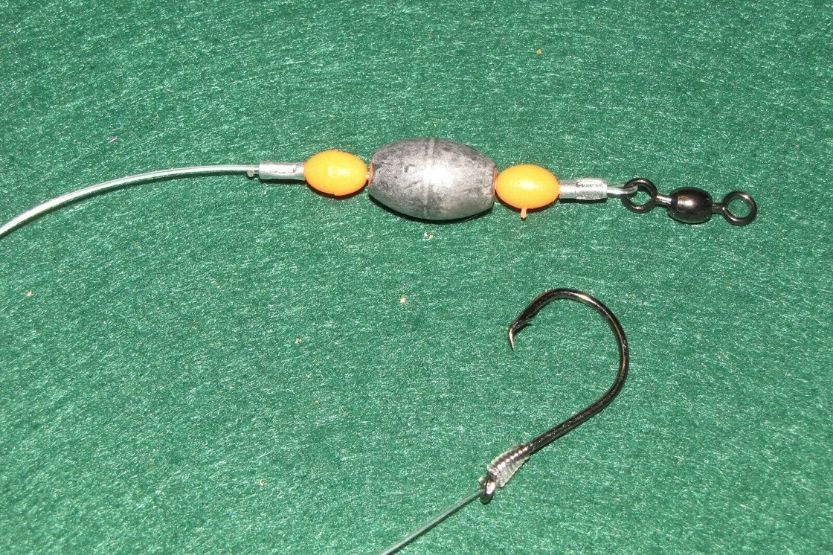
This ensures a high percentage of hookups. Additionally, circle hooks do not require a complicated setting. This makes them ideal for beginning anglers. The setting of other hooks like J hooks is somewhat difficult.
Line
The best line to use in a knocker rig is the monofilament line.
This is the best for bottom fishing because it has the best abrasion-resistant properties. In fishing for bottom dwellers, your line will be encountering rough structures such as rocks, gravel, reefs, and similar stuff, so you need an abrasive resistant line.
Bait
If you are a beginning angler, it is better to start with dead bait. This is much easier because this bait is easily available in tackle shops. If you want to use live bait, you have to catch them yourself. That adds to the work that you have to do, considering that you are just a beginner.
You have many choices for dead baits. They include mullet, sardines, cigar minnows, and other smaller creatures that fish love to eat.
If you are an advanced angler and try to catch bigger fish, you need to use live bait. You can only have live baits if you will catch them yourself. They usually loiter around wrecks, reefs, pylons, and jetties.
Knots
Knocker rigs won’t be able to catch fish if they don’t have knots. You need to know how to make knots that will stay knotted even if the fish is trying to escape from the clutch. The simple Snell knot is typically used in knocker rigs.
This knot offers a straight line pull once the hook is set. It makes an ideal setup for the knocker rig. To tie this knot, run the end of the tag through the eye of the hook. Afterward, create a small loop knot and then bring the tag end behind the hook shank.
Proceed to wrap the tag end around the line and the hook shank. Then make a couple of wraps before feeding out the tag end through the loop by first going under and then over. Hold the wraps in place, and then pull the tag end to tighten everything. Then snip off the end of the tag.
Conclusion: Knocker Rig for Fishing
A knocker rig is an egg-shaped sinker attached directly above the hook and under a rigging or swivel. This sinker knocks into the face of the head or the bait as it hangs on the line. The function of knocker rigs is to keep the bait floating just above the seafloor or the riverbed.
Knocker rigs effectively catch many fish species, including snappers, tilefish, tarpons, goliath groupers, rockfish, amberjacks, and porgies.


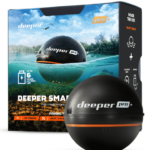
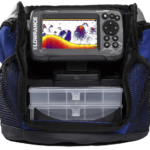
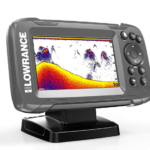

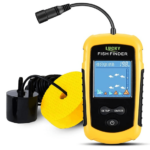


![Read more about the article Fine for Fishing Without a License [How Much Is It?]](https://boatinggeeks.com/wp-content/uploads/2020/12/fine-for-fishing-without-a-license-300x200.jpg)